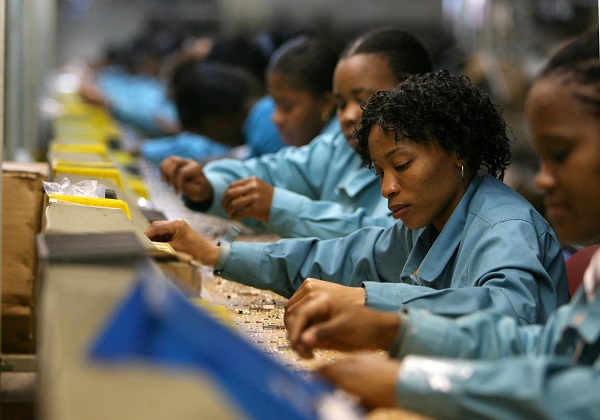

Follow us on:  
|


Strong data from mining and manufacturing helped boost the South African economy in Q2, but the economy slipped in Q4 [Xinhua]
Jean-Michel Six, Global Head of Developing Markets at S&P, said in his presentation at the “What’s in store for South Africa in 2017?” seminar last week that he expected a gradual improvement in the next two years after a poor two years in 2015 and 2016. Brazil’s economy, for instance, is now 8 per cent worse off than in December 2014, while all BRICS currencies have depreciated against the US dollar since 2014.
“We have seen a recovery in world trade in recent months and emerging markets, including the BRICS, have seen increased capital inflows with the Institute of International estimating net inflows at $17.1 billion in February alone,” Six said.
S&P forecasts that South Africa’s real economic growth will rise to 1.4 per cent in 2017 from 0.5 per cent in 2016 and then increase further to 1.8 per cent in 2018.
Gardner Rusike, S&P’s associate director for sovereign ratings, said S&P still had a negative outlook on South Africa as the government talk of 2016 had to be turned into implementation.
It was worried about weak economic growth as the fourth quarter 2016 had seen another quarterly contraction, while political tensions between the Treasury and other arms of government dominated the headlines and policy reform in South Africa, such as the instruction by President Jacob Zuma to Eskom to sign Power Purchase Agreements with Independent Power Producers given in the February 9 State of the Nation Address still had to be implemented.
“If we see an increase in political tensions, continued infighting in state institutions which could derail the government’s plans in boosting economic growth, then that can impact on our forecasts on growth,” Rusike said.
He added that if improved policy implementation resulted in better business confidence and a consequent rise in business fixed investment, then South Africa’s outlook could be changed to stable. S&P undertakes semi-annual assessments of South Africa in June and December of each year.
South Africa’s private businesses have cut their spending on fixed investment due to policy uncertainty and subdued domestic and foreign demand even though corporate balance sheets have more than R700 billion in cash or near-cash equivalents.
The Rand Merchant Bank (RMB)/ Bureau for Economic Research (BER) Business Confidence Index rose marginally to 40 in the first quarter 2017 from 38 in the fourth quarter.
This means only four out of every ten respondents were satisfied with business conditions. Since 2008 the BCI has only been above the neutral 50 mark on four occasions, which reflected poor follow through in terms of policy implementation and subdued domestic and foreign demand.
Grant Thornton’s International Business Report showed that 58% of executives surveyed in South Africa said they are delaying expansion plans because of uncertainty about South Africa’s future.
Nearly half are putting off investment decisions, a third are considering investing offshore and 23% were considering selling and moving elsewhere.
Already companies invested in green energy technology manufacturing plants have decided to close shop and move to other BRICS countries such as India and China after Eskom stopped signing Power Purchase Agreements with Independent Power Producers in July 2016. Despite instructions to sign them from the President in early February 2017, Eskom have still not signed any new ones in mid-March 2017.
Helmo Preuss in Johannesburg for The BRICS Post